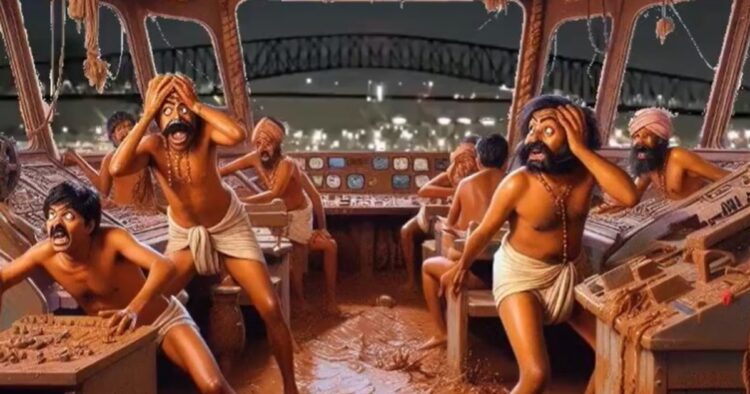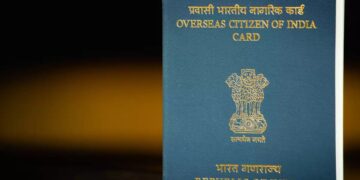In response to a controversial cartoon depicting Indian crew members aboard the ill-fated ‘DALI’ container ship, which collided with the Francis Scott Key Bridge in Baltimore, netizens have condemned the portrayal as racist. The cartoon, created by Foxford Comics, depicted the crew in ‘brownface attire’ and inaccurately portrayed them in loin cloths amid murky waters within the ship’s control room.
The cartoon, captioned “Last known recording from inside the DALI moments before impact,” drew widespread criticism for its racially insensitive portrayal of the Indian crew members. Additionally, audio within the cartoon featured people swearing in a strong Bharatiya English accent, further fueling outrage.
Last known recording from inside the Dali moments before impact pic.twitter.com/Z1vkc828TY
— Foxford Comics (@FoxfordComics) March 26, 2024
However, officials revealed that the Singapore-flagged ship ‘DALI’ had experienced a “power issue” and issued a distress call moments before the collision occurred. Both Maryland Governor Wes Moore and US President Joe Biden praised the crew for their quick-thinking actions, which included sending a Mayday call that ultimately led to the closure of the bridge, potentially saving lives.
Bharatiya economist Sanjeev Sanyal highlighted that the ship was likely being steered by a local pilot at the time of the incident. He emphasized the heroic actions of the DALI’s crew in alerting authorities, which contributed to minimizing casualties in the Baltimore bridge collapse.
Netizens swiftly reacted to the cartoon, with many condemning it as racist and insensitive. Some pointed out the significant contributions of Bharatiya and Filipino crew members in the maritime industry and criticized the cartoon for perpetuating harmful stereotypes.
Despite clarification regarding the ship’s operation and the crew’s actions, criticism of the cartoon persisted. Many emphasized the importance of recognizing and addressing systemic issues such as racism, particularly in instances where individuals from marginalized communities are unfairly targeted.
The controversy surrounding the cartoon serves as a reminder of the ongoing challenges in combating racism and prejudice, both online and offline. Calls for greater awareness and accountability in media representation have amplified as communities continue to advocate for inclusivity and respect for diversity.

















Comments